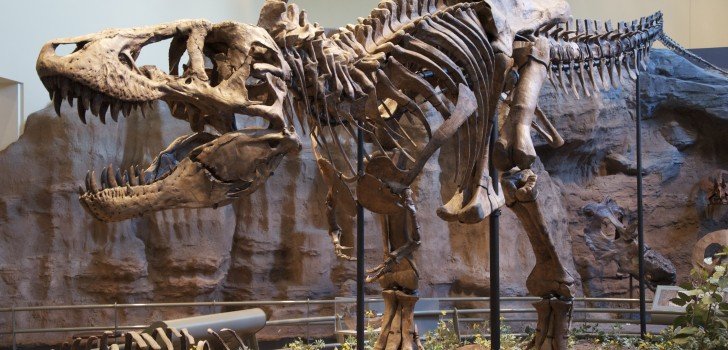Scientists have determined that a species of dinosaur known as Nanotyrannus is actually just young Tyrannosaurs Rex.
The Tyrannosaurs Rex dinosaurs were up to 40 feet in length. They weighed more than 18,000 pound, and with a biting force of more than 12,000 pounds. Bones for the extinct creatures have been displayed in museums for more than a century.
However, new research shows that the creatures changed dramatically as they grew up. The process started when a small skull, appearing to be that of a tyrannosaur, was discovered in 1942. The skull sat in the Cleveland Museum of Natural History for decades.
In 1988, scientists said that the skull represented that of entirely new dinosaur genus, a small type of tyrannosaur that would become known as the Nanotyrannus.
Still, some scientists were not convinced. These naysayers instead said that the Nanotyrannus that was discovered was actually just a young Tyrannosaurus Rex that hadn’t hit puberty yet.
The debate went on for several years. Scientists that argued that the skull was of a different species than the tyrannosaur cited key differences in size and the number of teeth.
However, a recent comprehensive analysis that was conducted by paleontologist Thomas Carr of Carthage College and a team of his colleagues showed that the Nanotyrannus species of dinosaurs are actually just young Tyrannosaurus Rex dinosaurs.
Carr and his team did not use the skull that was discovered in 1942, but rather used a skull that was discovered more recently in 2001. Scientists have already confirmed that these two skulls are the same dinosaur species.
The dinosaur with the skull that was discovered in 2001 was about 11 years old when it died. At that point, it still had not developed the traditional deep-skull profile that is commonly associated with the Tyrannosaurus Rex.
Carr says that if the dinosaur had lived just a little bit longer, it would have experienced a growth spurt to make it more resemble a classic Tyrannosaurus Rex.
Meanwhile, the skull from 1942 was even less developed than the skull from 2001, which certainly led to its diagnosis as a different species.
For now, scientists are having a difficult time learning more about the creatures, since most skeletons for Tyrannosaurus Rex are maintained by private individuals rather than museums or scientists. This limits the amount of research that can be conducted.
At the present time, scientists have not conducted enough research to rule out the possibility of the existence of the Nanotyrannus. That being said, the existence of such a creature still has not been confirmed.
Stay Connected